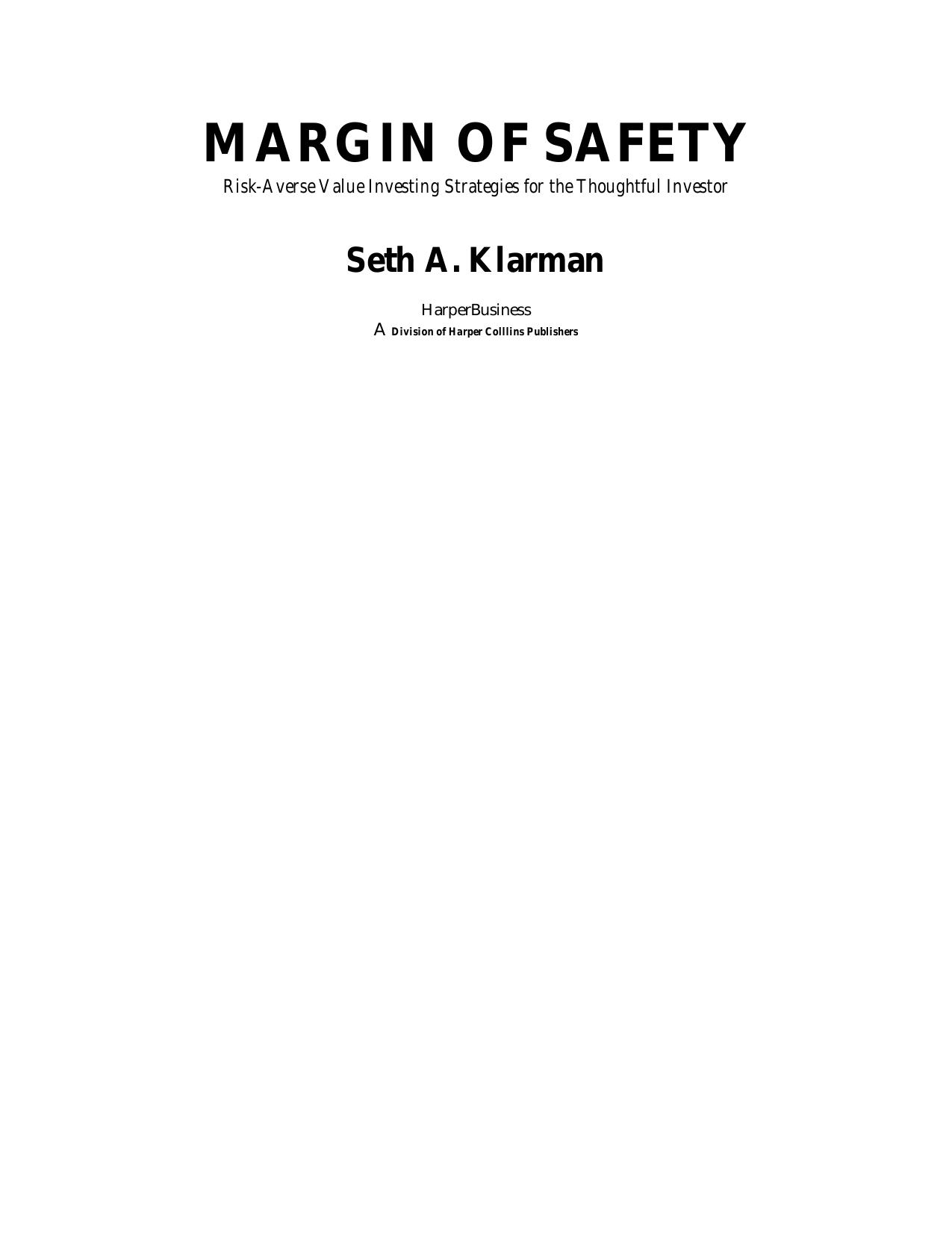Margin of Safety: Risk-Averse Value Investing Strategies for the Thoughtful Investor by Seth A. Klarman

Author:Seth A. Klarman
Language: eng
Format: mobi, epub, pdf
Tags: Investments, Finance, Business & Economics, General
ISBN: 9780887305108
Publisher: HarperBusiness
Published: 1991-02-14T18:30:00+00:00
The Relevance of Temporary Price Fluctuations
In addition to the probability of permanent loss attached to an investment, there is also the possibility of interim price fluctuations that are unrelated to underlying value. (Beta fails to distinguish between the two.) Many investors consider price fluctuations to be a significant risk: if the price goes down, the investment is seen as risky regardless of the fundamentals. But are temporary price fluctuations really a risk? Not in the way that permanent value impairments are and then only for certain investors in specific situations.
It is, of course, not always easy for investors to distinguish temporary price volatility, related to the short-term forces of supply and demand, from price movements related to business fundamentals. The reality may only become apparent after the fact. While investors should obviously try to avoid overpaying for investments or buying into businesses that subsequently decline in value due to deteriorating results, it is not possible to avoid random short-term market volatility. Indeed, investors should expect prices to fluctuate and should not invest in securities if they cannot tolerate some volatility.
If you are buying sound value at a discount, do short-term price fluctuations matter? In the long run they do not matter much; value will ultimately be reflected in the price of a security. Indeed, ironically, the long-term investment implication of price fluctuations is in the opposite direction from the near-term market impact. For example, short-term price declines actually enhance the returns of long-term investors.1 There are, however, several eventualities in which near-term price fluctuations do matter to investors. Security holders who need to sell in a hurry are at the mercy of market prices. The trick of successful investors is to sell when they want to, not when they have to. Investors who may need to sell should not own marketable securities other than U.S. Treasury bills.
Near-term security prices also matter to investors in a troubled company. If a business must raise additional capital in the near term to survive, investors in its securities may have their fate determined, at least in part, by the prevailing market price of the company’s stock and bonds. (Chapter 8 contains a more complete discussion of this effect, known as reflexivity.)
The third reason long-term-oriented investors are interested in short-term price fluctuations is that Mr. Market can create very attractive opportunities to buy and sell. If you hold cash, you are able to take advantage of such opportunities. If you are fully invested when the market declines, your portfolio will likely drop in value, depriving you of the benefits arising from the opportunity to buy in at lower levels. This creates an opportunity cost, the necessity to forego future opportunities that arise. If what you hold is illiquid or unmarketable, the opportunity cost increases further; the illiquidity precludes your switching to better bargains.
The most important determinant of whether investors will incur opportunity cost is whether or not part of their portfolios is held in cash. Maintaining moderate cash balances or owning securities that periodically throw off appreciable cash is likely to reduce the number of foregone opportunities.
Download
Margin of Safety: Risk-Averse Value Investing Strategies for the Thoughtful Investor by Seth A. Klarman.epub
Margin of Safety: Risk-Averse Value Investing Strategies for the Thoughtful Investor by Seth A. Klarman.pdf
This site does not store any files on its server. We only index and link to content provided by other sites. Please contact the content providers to delete copyright contents if any and email us, we'll remove relevant links or contents immediately.
Rich Dad Poor Dad by Robert T. Kiyosaki(6186)
Pioneering Portfolio Management by David F. Swensen(6084)
How To Win Friends and Influence People by Dale Carnegie(4341)
The Money Culture by Michael Lewis(3851)
The Dhandho Investor by Mohnish Pabrai(3566)
The Wisdom of Finance by Mihir Desai(3531)
Liar's Poker by Michael Lewis(3228)
The Intelligent Investor by Benjamin Graham Jason Zweig(2936)
The ONE Thing by Gary Keller(2922)
Mastering Bitcoin: Programming the Open Blockchain by Andreas M. Antonopoulos(2895)
Fooled by Randomness: The Hidden Role of Chance in Life and in the Markets by Nassim Nicholas Taleb(2868)
Rich Dad Poor Dad: What The Rich Teach Their Kids About Money - That The Poor And Middle Class Do Not! by Robert T. Kiyosaki(2836)
Investing For Dummies by Eric Tyson(2800)
How to Win Friends and Influence People by Dale Carnegie(2799)
How to Day Trade for a Living: Tools, Tactics, Money Management, Discipline and Trading Psychology by Andrew Aziz(2787)
Market Wizards by Jack D. Schwager(2545)
Zero Hour by Harry S. Dent Jr. & Andrew Pancholi(2537)
How to Pay Zero Taxes, 2018 by Jeff A. Schnepper(2503)
Rich Dad's Guide to Investing by Robert T. Kiyosaki(2412)
